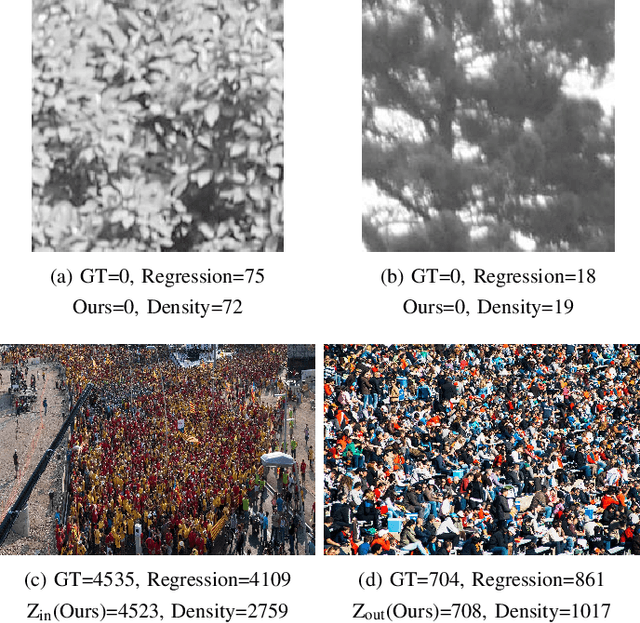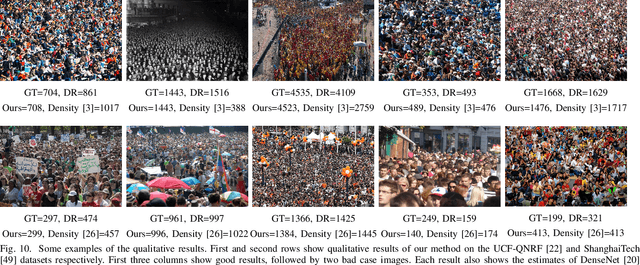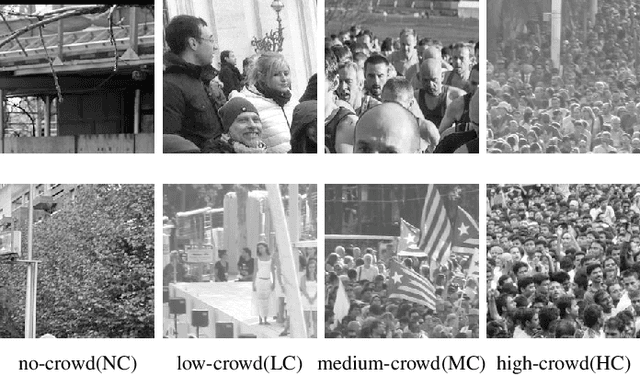ZoomCount: A Zooming Mechanism for Crowd Counting in Static Images
Paper and Code
Feb 27, 2020



This paper proposes a novel approach for crowd counting in low to high density scenarios in static images. Current approaches cannot handle huge crowd diversity well and thus perform poorly in extreme cases, where the crowd density in different regions of an image is either too low or too high, leading to crowd underestimation or overestimation. The proposed solution is based on the observation that detecting and handling such extreme cases in a specialized way leads to better crowd estimation. Additionally, existing methods find it hard to differentiate between the actual crowd and the cluttered background regions, resulting in further count overestimation. To address these issues, we propose a simple yet effective modular approach, where an input image is first subdivided into fixed-size patches and then fed to a four-way classification module labeling each image patch as low, medium, high-dense or no-crowd. This module also provides a count for each label, which is then analyzed via a specifically devised novel decision module to decide whether the image belongs to any of the two extreme cases (very low or very high density) or a normal case. Images, specified as high- or low-density extreme or a normal case, pass through dedicated zooming or normal patch-making blocks respectively before routing to the regressor in the form of fixed-size patches for crowd estimate. Extensive experimental evaluations demonstrate that the proposed approach outperforms the state-of-the-art methods on four benchmarks under most of the evaluation criteria.
 Add to Chrome
Add to Chrome Add to Firefox
Add to Firefox Add to Edge
Add to Edge